Shield Sights isn’t yet a household name in the U.S., but it should be and likely will be soon enough. SHIELD has been around for about 30 years making optics, suppressors, suppressed weapons, stocks, and more primarily for the British military and special forces. They made the red dots for Trijicon back in the day and were early innovators in the LED red dot optic game. SHIELD makes the JPoint that has been on my G19 MOS since day one, but now they’re selling their own, improved mini red dot on this side of the pond, and it’s called the RMS . . .
When placed next to the JPoint (which is sold as the SHIELD SMS outside the U.S.) — SHIELD left, JPoint right in both photos above — the RMS is obviously extremely similar. Dimensionally it’s effectively identical. They both use a polycarbonate lens instead of a glass one, and they both run for a shockingly long time on a single CR2032 battery. They both fit the same mounts.
The RMS, though, is metal rather than plastic. It’s machined from a block of aluminum then hard coat anodized. Don’t worry, it’s still a featherweight at 17.5 grams (0.61 ounces, which is half the weight of a Trijicon RMR).
The RMS exudes a look and feel of higher quality due to the materials, precise machining, and nice finish. Those lightening cuts in the sides add some flair and visual interest, too.
I must admit, though, that despite the JPoint’s and RMS’ two- to three-year battery life with regular use, the feature I was most excited for on the RMS is its side-opening battery tray.
Whereas the JPoint had to be removed from the weapon in order to swap the battery — as is the case with most micro red dots — the RMS is offered with a slide-out tray that allows the battery to be swapped quickly and easily while the sight remains firmly mounted.
Another great feature of the RMS is its thin base. It’s so compact that, with the right mount or milling job, it’ll actually co-witness with standard-height iron sights. No need to purchase extra tall “suppressor sights” so they can be seen and aligned through the window of the optic. Aside from the JPoint, I’m not sure there’s another red dot on the market that can make this claim.
Taking that a step further, you may have noticed that my GLOCK doesn’t even have a factory rear sight on it. While the RMS works perfectly with the rear sight in place, I just didn’t see a point to keeping it. The RMS has its own rear sight notch built into the body, and it happens to be the perfect height for the factory GLOCK front sight. As I generally prefer an all-black rear vs. a 3-dot arrangement or, worse, the GLOCK U-line rear, it was an easy decision to drift that superfluous piece of plastic off.
Thanks to the polycarbonate lens, there’s no distortion or color shift when looking through the RMS. It doesn’t require a red coating and gets only an anti-reflection and anti-scratch treatment. Glare and “visual signature” from downrange are reduced as compared to a glass lens RDS. Additionally, the polymer lens is both lighter weight and more impact resistant than glass. It falls short vs. its glass brethren only in scratch resistance.
A light sensor in the RMS adjusts the dot’s brightness automatically. And very well, I might add. For instance, if you’re in deep shade but your target is in full sun, the sensor does a good job of recognizing the brightness of your target area and adjusting the dot accordingly.
The 4 MOA or 8 MOA dot gets plenty bright enough to be clearly seen even in full, glaring daylight against a light background. The photo above does not do it justice, as my cell phone simply couldn’t handle the situation. Go two photos up to the one where I’m holding that tree hostage and the crisp, clean, 4 MOA dot on this RMS is that bright and obvious even in full sun, too.
Then in the dark it automatically and almost instantaneously adjusts down. Low enough, in fact, to be night vision compatible. By the way, left in the dark — in a safe, with the cap on, or carried concealed under your clothes — the battery is good for at least four years.
With a good dozen or more mounting options, the RMS can be readily adapted to other platforms. Mount it to a race gun, onto an ACOG, Elcan Specter, or a scope, off at a 45-degree angle on an AR, to anything with a Picatinny rail with or without risers, to a shotgun, to an MP5 or a USP, to a standard GLOCK via the rear sight dovetail, and more.
Small, lightweight, flawlessly auto-adjusting, and clear and distortion free, the SHIELD RMS is the best mini red dot sight on the market.
Specifications: SHIELD RMS (Reflex Mini Sight)
Light Source: Red light emitting diode (LED) No laser; completely eye safe No radioactive materials
Red Dot Size Options: 4 MOA dot 8 MOA dot
Battery: One 3V lithium battery, CR2032
Battery Life: 2 to 3 years – average use >4 years – dark storage
Brightness Adjustment: Automatic
Brightness Range: Lowest – Compatible with Night Vision: Highest – Visible against the sky in bright daylight
Housing Material: Aluminium
Colour: Matte black
Dimensions: Sight only (Length x width x height) 42 x 25 x 23 mm 1.7 x 1.0 x 0.9 inches
Weight: 17.5 grams / 0.61 ounces
Mount: A wide range of mounts are available.
MSRP: $400 via Brownells
Ratings (out of five stars)
Form Factor * * * * *
It’s likely the lightest mini red dot on the market and it has the flattest base, too. So flat, in fact, that standard-height pistol sights co-witness with it. The window size is more than sufficient, yet doesn’t add width to most pistol slides and is small enough to effectively use as a ghost ring sight (“window of death”) at closer ranges. It has a relatively thin bezel and a nice shape to the front face for use in slide manipulation. Aesthetically the RMS looks cool, but is still understated compared to some of the competition.
Function * * * * *
Crisp dot. Parallax free, distortion-free, and color-shift free. Automatic brightness adjustment works incredibly well from as dim to as bright as one could possibly need it. One CR2032 runs it for 2-3 years of regular use and can be replaced without removing the optic. The RMS is so lightweight that it shouldn’t affect slide cycling on any pistol. Integrated rear sight notch works just right on a GLOCK — likely other pistols, too — and standard-height sights can co-witness. Strong enough to withstand drops and direct impacts or use as the sole means of racking a pistol slide. Highly water resistant.
Quality * * * * *
Machining and finish are near-on flawless. Fit is perfect. It holds up to abuse. I’ve experienced a major brand micro red dot fritzing out on my pistol before and have seen a few with cracked lenses. The polycarbonate lens in the RMS is not only clearer and more distortion-free than most glass ones but it weighs less and is, in most ways, more durable. The RMS also seems to shrug off water immersion better than most of the competition that’s also designed with open-bottom battery trays.
Overall * * * * *
I think the SHIELD RMS is the best micro red dot sight on the market, or at least as good as it gets. No buttons, no settings, it just works and works well.


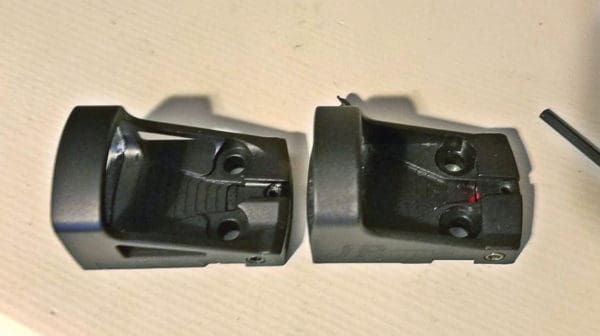
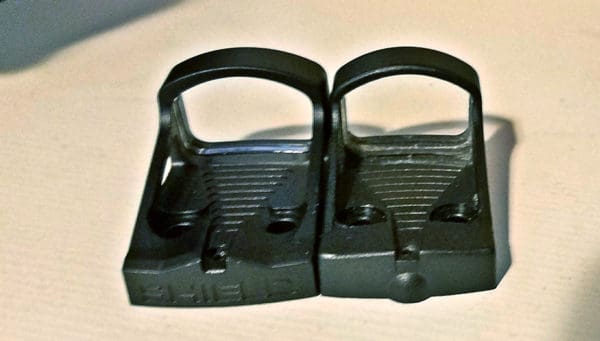
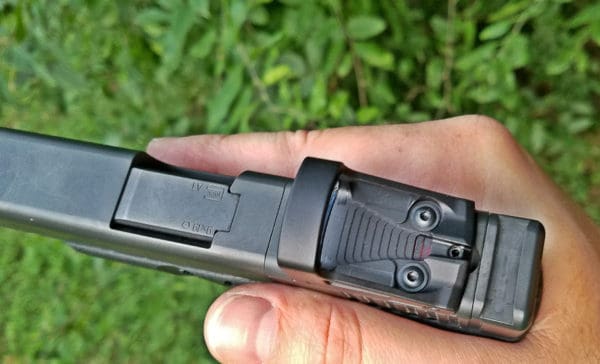
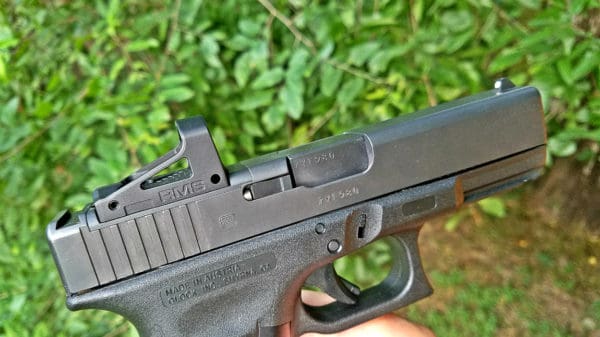
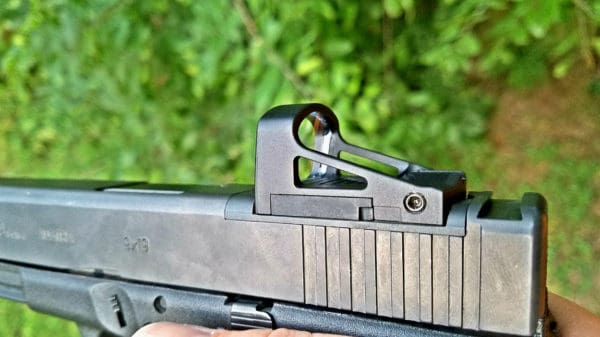
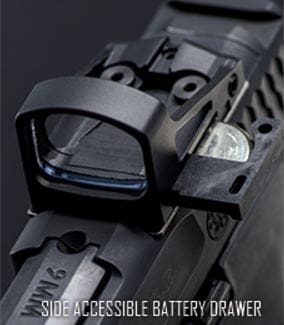
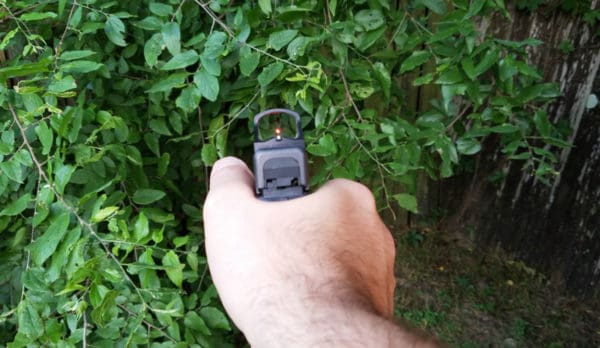
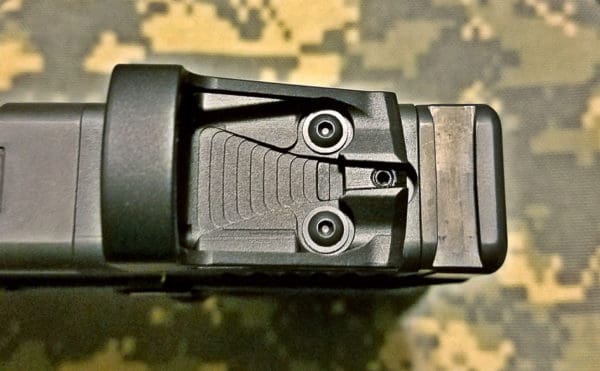
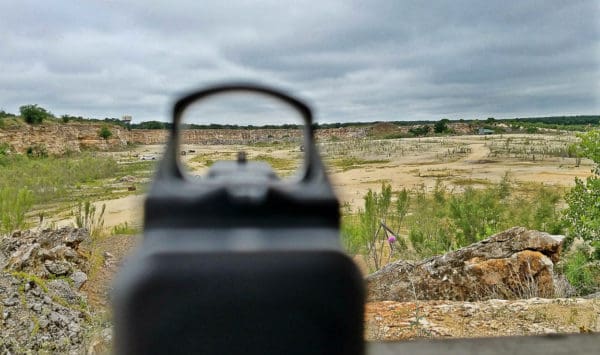
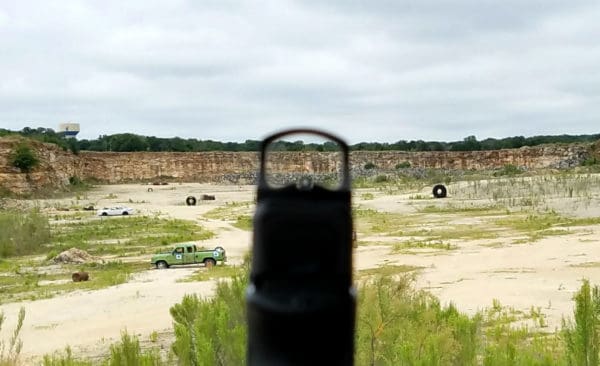
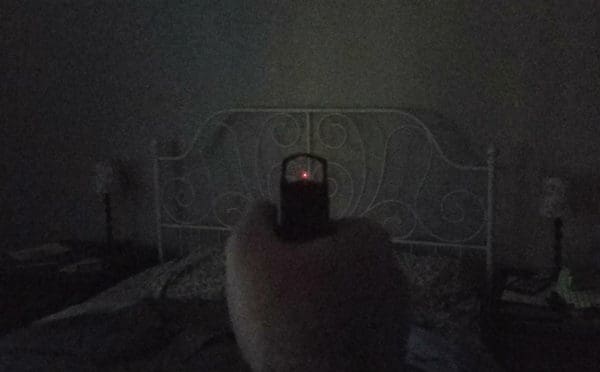
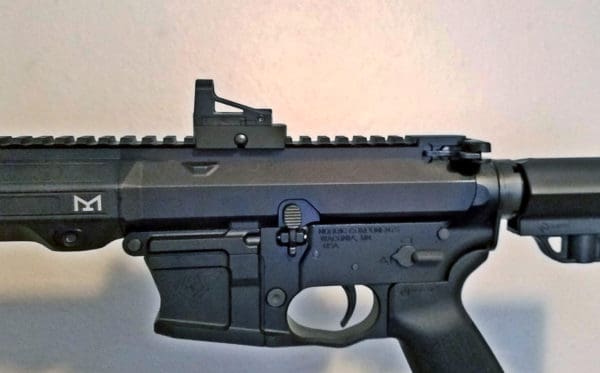
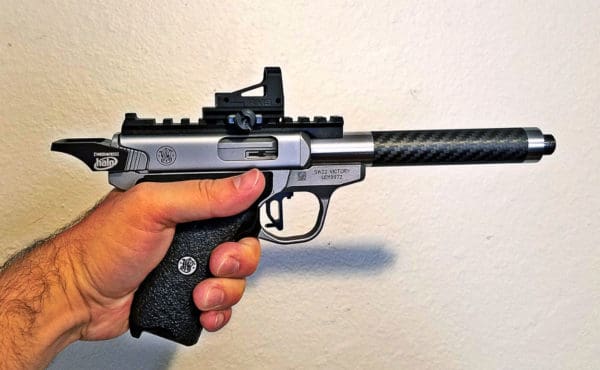
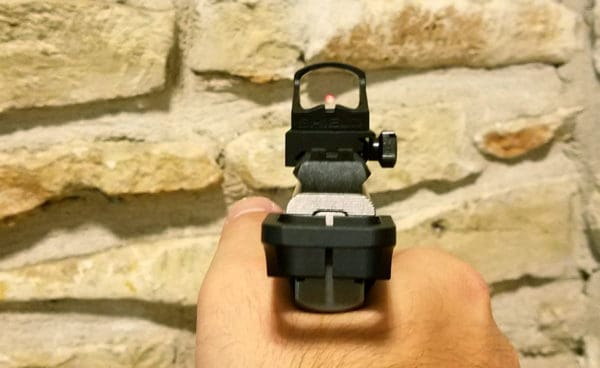
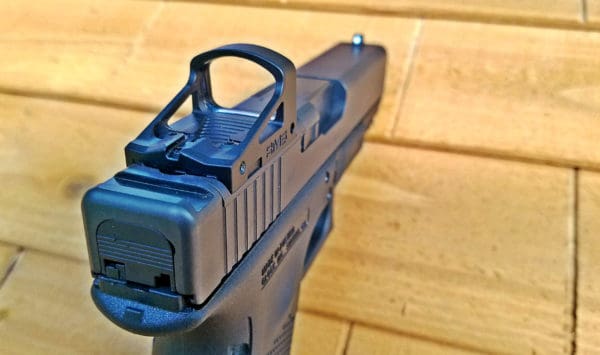

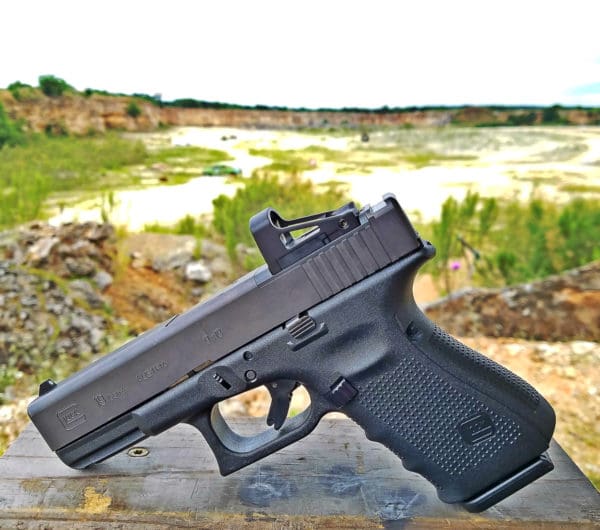
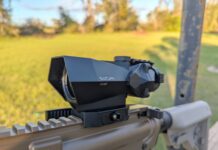


Do they specify an IP rating? This weekend, I expect to have to shoot a competition in the rain. One of the things I like about the RMR is that it will function just fine after a nice long soak in a bucket of water.
Most of these mini sights are totally open on the bottom, meaning the battery and its connections are exposed on the bottom. The RMR has a rubber gasket under it so it will seal up on a flat surface or there’s a special water tight plate that can be used between the RMR and whatever you’re mounting it to. The RMS here and most other MRDS don’t offer that. What I’ve found is that these SHIELD ones are more resistant to temporary electrical issues due to water than the others of similar design. I’ve dunked mine and it continued functioning fine. Heavy rain is a non-issue. I think they stop short of being submersion rated though because of the bottom design and the fact that standing water filling the battery area could screw up the separation between + and -. However, as soon as that water is out it’ll run again (won’t fry it). SHIELD claims there are 15,000+ of these in military service and they’re made for adverse conditions. However, as a primary battle optic they still point towards their SIS and CQS and such, which are basically this same sight built into a full housing with a rear lens (so the LED is enclosed inside a sealed unit) and a sealed bottom and sealed battery compartment, etc.
IMHO, since the RMS frame is aluminium, SHIELD could improve this sight by milling a groove just inside the entire circumference of the bottom and having a rubber gasket made to put in that groove. Then, like the RMR, it would seal up against whatever flat surface you mount it to and make the bottom waterproof.
First red dot that’s made me consider a red dot on a carry gun.
WANT
The slide tray for the battery sounds neat, but doesn’t that make an entry point for water intrusion?
And Jeremy, if you’re worried about scratching the poly-carb lens, cover it with a piece of smartphone screen protector. That’s pretty much the default thing I do on the screens of electronics like that…
Yeah, it likely does. It’s an optional feature apparently and they’re saying they’ll also be making the RMS without the tray, and at a lower cost, too.
Good idea with the lens protector. At least on the outside…not sure if it would do anything weird with the LED reflection on the inside. Though I’ve had my JPoint on my EDC G19 for over 1.5 years now and the lens isn’t scratched. And I usually just wipe lint and dust off with my shirt, too. Though I should say it’s amazing how linty and dusty the thing can get and still show a clear, bright dot haha
The price is too high. $400 is a lot.
Absolutely.
That’s full U.S. MSRP apparently. Retail prices on RMR are $500+, EOTech’s version $500, Leupold Deltapoint $300 at retail. I think we’ll see these at Deltapoint prices once they’re readily available in the U.S. They’re like $265 British Pounds + VAT on the SHIELD UK website.
Agree on the price. Can you imagine how much more money could be made on volume if the price was 200 vs 400? 400 is absurd if you want this optic for multiple guns!
Sounds like a neat doohickey. I like the fact that even though the battery last 4 years, they considered customers convenience a priority and made the slide-out battery drawer. That. Plus the low-mount feature, tells me considerable thought about practicality of use by the consumer was a priority. Thanks for the great review, Jeremy S. ! Now if I can just get past my prejudice about this type of sight on a pistol, but this sight has gone a long way toward dispelling that.
Dang it.
There goes the last of this months fun money
What is the COUNTRY OF ORIGIN? There some reason reviews don’t specify?
This stuff is not in the barbiedoll or teeshirt category where country may not matter. Buying firearms goods that support the R&D of the PLA is not/never acceptable and should be well know.
As this sight is not bargain basement price it may not chicom so should be discussed.
Note: I called Primary Arms regarding the recent review of their 30mm sight. Made in chicomland. gong
Oh sorry, I often do include that in the statistics section. They’re made in Britain.
BTW that copied-and-pasted press release about the new 30mm red dot from Primary Arms is NOT a review. I find it concerning when people refer to press releases and product news as “reviews.” All the PA branded optics are made in China except for their Platinum series, which is made in Japan.
Yeah it’s great, up until the screen starts getting gouged by errant ejecting brass during matches and the thing dies permanently from rain exposure. Not waterproof at all. Had to send mine back. Eliminate the slide out tray, put a window in front of the diode, provide some provision to seal the bottom against water, switch to a glass lens (my leupold deltapoint pro seems impervious to scratches from brass), then talk to me.
I’ve had a Burris FastFire II mounted on a Buckmark LiteGray for a while. Very nice, though the auto brightness dot was a little too bright until I put a micro spot of black paint on the sensor. This sight looks very nice, except for the price.
Let me point out though, that no reflex sight is parallax free. This is why folks including our military shell out the money, and put up with the size, weight, and short lived big batteries for laser holographic sights like the EOTech. Those are parallax free.
Because reflex sights do have parallax issues, you should always attempt to locate the dot in the center of the window while firing.
If you want to see the parallax, place the unmounted sight on a bench and line up the dot with a mark or target on the wall. Then move your head around. As the dot travels around the window, you will see that the dot does not stay perfectly on target.
It does stay on target. As long as the dot is in the window, it’s on target. I realize that mathematically these sights have some parallax and can only be truly parallax free at a specific distance. However, in practice, with this optic there’s so very little parallax from practically point blank out to infinity that it stays within the 10 ring. I can only recognize that small amount of parallax inside like 15 to 20 yards and beyond that it’s rock steady on the bull.
A customer once asked if we accommodated the Shield sight RDS.. I thought he meant an RMR on the Shield. (forehead slap)
“Colour.”
SMH.
Pink Floyd – ‘Any Colour You Like’.
Curb, kerb, etc…
Odd to see a supposed gun rights blog promote elements of British culture–colour, piece of kit, etc.
LOL. Stats were copied-and-pasted from SHIELD’s website. It’s a UK company.
Cheerio,
Jeremy
ive never understood the need for these. its not like the red dot is in a fixed position on the glass. it floats around with your eye. i just dont see how people tolerate that or think its desirable.
Well, yeah. It has to. The dot stays on the target. If it were in a fixed spot on the glass it would only line up with the point of impact if your eye were PERFECTLY aligned behind it. By “moving around” it accommodates for your eye alignment and where the dot is on the background is always where the bullet impacts. It wouldn’t be functional otherwise.
Great for a range toy or hunting pistol optic, but I’d be a bit iffy on having this on a defense firearm. One more thing to go wrong in a situation that’s stressful enough.
It’s pretty easy. For close range, you don’t even worry about the dot. The frame of the optic window just gets used like a ghost ring sight. If it’s in the window, it’ll be hit. This works whether the sight is functional or the lens is totally blown out or what. Then there’s always the normal iron sights, which can be used as usual. But move the ranges out farther…30 yards, 50 yards, 100 yards…and all of a sudden you can confidently make hits on target. IPSC target head shots at 50 yards? Sure thing. I can’t do that with confidence with glock iron sights. Easy peasy with the dot. Hits on steel at 100 ain’t no thang.
I think this reply actually supports the range toy/competition/hunting argument. Not a knock on the quality of the optic, or your chosen uses for it, this is America after all and the freedom to choose and all that…But 50 yard head shots and 100 yard pistol shots don’t fit anywhere into my pistol defensive use formulas.
A lot of people are re-thinking that with various sorts of terrorist attacks and such. Like if you’re on a baseball diamond and you’re at third base and there’s a shooter near the parked cars 50 yards away.
I don’t see a negative to it for short range use (heck, if you want to you can ignore it entirely and just use the iron sights as usual). It simply opens up the ability to make accurate hits at longer ranges, too. Plus, see Muzzle Blast’s comment below.
And I like using the blade of my hand to rack the slide with it 🙂
As I get older and my vision heads south I have found a mini red dot on my G23 and M&P 9 FS a significant plus. As is, my sight makes if very difficult to align the sights while maintaining the target and focusing on the front sight post. With the Venom or RMR I just focus on the target (with both eyes open), place the red dot on the target and squeeze the trigger. These red dots have proven a tremendous advantage and given me the ability to accurately hit targets out to 50 yards. I was concerned with reliability however after over 2,000 rounds under a variety of environmental conditions, not one problem. I love’em.
So a quick scan of their web site indicates that you can get a S&W M&P AR with a Shield sight but not a S&W M&P Shield with a Shield sight. They have a lot of mounting options so if you want to mount a Shield on your Shield you might be able to. Just don’t confuse it with your Shield equipped AR made by the same people as your Shield equipped Shield.
Say that three times fast
I’m planning to get my gen3 Glock 19 milled for the RMS. But I’m on the fence on which size dot to get. The 4 moa or the 8 moa. Which would you recommend for a fighting pistol?
Any issues with cycling the weapon with the extra weight of the RMS?
No, barely weighs anything.
I have the Shield SMS (AKA JPoint) on a Performance Center Shield. I have shot 4-5K rounds in tactical training classes/drills in this configuration over the last year with no incidents. I do shoot indoors (so no moisture testing), but clear malfunctions sweeping the Optic, shoot rapid fire rates, tons of dry-fire practice from holster, carry, etc. with no issues. Still using factory battery, have NEVER had to re-zero, tighten the retaining screws, change battery, etc.
Bowie Tactical did my slide work (he was the only person I could find a year ago). There are several custom shops that mill Shield slides today.
Jeff
Great review, as usual from this site.
Very good read on the Shield RMS.
I appreciate that this is an old post but . . . here goes.
The Shield is now available as a waterproof version.
They have done away with the side battery door – not really needed as it has such a good battery life.
For full specs see: https://www.shieldpsd.com/portfolio-posts/reflex-mini-sight-waterproof
for full specs.
Comments are closed.